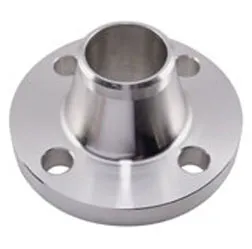-
Cangzhou Yulong Steel Co., Ltd.
-
Phone:
+86 13303177267 -
Email:
admin@ylsteelfittings.com
- English
- Arabic
- Italian
- Spanish
- Portuguese
- German
- kazakh
- Persian
- Greek
- French
- Russian
- Polish
- Thai
- Indonesian
- Vietnamese
- Zulu
- Korean
- Uzbek
- Hindi
- Serbian
- Malay
- Ukrainian
- Gujarati
- Haitian Creole
- hausa
- hawaiian
- Hebrew
- Miao
- Hungarian
- Icelandic
- igbo
- irish
- Japanese
- Javanese
- Kannada
- Khmer
- Rwandese
- Afrikaans
- Albanian
- Amharic
- Armenian
- Azerbaijani
- Basque
- Belarusian
- Bengali
- Bosnian
- Bulgarian
- Catalan
- Cebuano
- China
- China (Taiwan)
- Corsican
- Croatian
- Czech
- Danish
- Esperanto
- Estonian
- Finnish
- Frisian
- Galician
- Georgian
- Kurdish
- Kyrgyz
- Lao
- Latin
- Latvian
- Lithuanian
- Luxembourgish
- Macedonian
- Malgashi
- Malayalam
- Maltese
- Maori
- Marathi
- Mongolian
- Myanmar
- Nepali
- Norwegian
- Norwegian
- Occitan
- Pashto
- Dutch
- Punjabi
- Romanian
- Samoan
- Scottish Gaelic
- Sesotho
- Shona
- Sindhi
- Sinhala
- Slovak
- Slovenian
- Somali
- Sundanese
- Swahili
- Swedish
- Tagalog
- Tajik
- Tamil
- Tatar
- Telugu
- Turkish
- Turkmen
- Urdu
- Uighur
- Welsh
- Bantu
- Yiddish
- Yoruba

Aug . 31, 2024 19:36 Back to list
ss mandrel bends
Understanding SS Mandrel Bends A Comprehensive Overview
Stainless steel (SS) mandrel bends are a fundamental component in various industries, particularly in the automotive and manufacturing sectors. These bends are characterized by their smooth curvature, ensuring that flow is not impeded, which is essential in applications where efficiency and performance are paramount. This article delves into the significance of SS mandrel bends, their manufacturing process, applications, and advantages.
What are SS Mandrel Bends?
Mandrel bends are formed using a rigid tool called a mandrel, which maintains the shape of the pipe during the bending process. Unlike traditional bending methods that can lead to kinks or deformations, mandrel bending ensures a smooth transition, which is crucial for maintaining the integrity of the flow inside the pipe. The material choice, stainless steel, offers significant benefits due to its corrosion resistance and durability, making it ideal for various environments.
Manufacturing Process
The production of SS mandrel bends typically involves several critical steps
1. Material Selection High-quality stainless steel is selected based on the specific requirements of the application. Common grades include 304 and 316, with 316 offering enhanced corrosion resistance, making it suitable for more challenging environments.
3. Bending The cut pipes are inserted into a bending machine, along with the mandrel. The machine applies force to bend the pipe around the mandrel, ensuring that the radius is smooth and consistent.
4. Finishing Post-bending, the products may undergo finishing processes like polishing to enhance aesthetics and functionality. This process also removes any potential sharp edges, ensuring safety during installation.
ss mandrel bends

5. Quality Control Each mandrel bend undergoes rigorous testing to ensure it meets specific industry standards and does not present any structural weaknesses.
Applications
SS mandrel bends are widely used in various applications, including
- Automotive Exhaust Systems The smooth bends minimize back pressure, improving engine performance. - HVAC Systems In heating, ventilation, and air conditioning systems, these bends ensure optimal air flow. - Piping Systems Used in chemical and fluid transport systems where corrosion resistance and durability are critical. - Architecture and Furniture Design SS mandrel bends are also employed in design elements that require aesthetic appeal combined with strength.
Advantages of SS Mandrel Bends
1. Enhanced Flow The smooth internal surface reduces turbulence and improves fluid flow, important in many mechanical systems.
2. Durability Stainless steel provides excellent resistance to rust and corrosion, ensuring a long lifespan even in harsh environments.
3. Versatility These bends can be manufactured in various angles, diameters, and wall thicknesses, making them suitable for a broad range of applications.
4. Aesthetic Appeal The polished finish often associated with stainless steel adds an attractive element to visible installations.
In conclusion, SS mandrel bends play a crucial role in several industries by providing efficient, durable, and aesthetically pleasing solutions for piping and structural needs. Understanding their manufacturing process, applications, and benefits is vital for professionals involved in design and engineering, ensuring that they can choose the right components for their projects. Whether it’s for automotive use or architectural designs, SS mandrel bends represent a blend of functionality and elegance that is hard to match.
Latest news
-
ANSI 150P SS304 SO FLANGE
NewsFeb.14,2025
-
ASTM A333GR6 STEEL PIPE
NewsJan.20,2025
-
ANSI B16.5 WELDING NECK FLANGE
NewsJan.15,2026
-
ANSI B16.5 SLIP-ON FLANGE
NewsApr.19,2024
-
SABS 1123 FLANGE
NewsJan.15,2025
-
DIN86044 PLATE FLANGE
NewsApr.19,2024
-
DIN2527 BLIND FLANGE
NewsApr.12,2024
-
JIS B2311 Butt-Welding Fittings LR/SR 45°/90° /180°Seamless/Weld
NewsApr.23,2024











